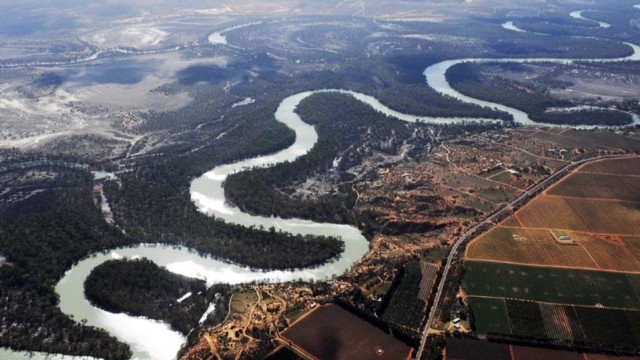7 reasons why using ‘environmental water’ for farming is a really bad idea.
Bad for the environment, bad for irrigators’ rights, not helpful for the farmers it is supposed to help — in a competitive field, this is truly one of the worst water policy ideas of recent times.

Much of Australia is experiencing drought, so why don’t we give farmers water that would just be ‘wasted’ on the environment? That’s the latest ideafrom Deputy Prime Minister McCormack and ex-Deputy PM Joyce. They’ve both called for environmental water to be ‘diverted’ or sold to farmers to grow fodder to feed to livestock.
Why is ‘environmental water’ so important?
Environmental water isn’t just here to keep the scenery looking pretty, environmental water is there to maintain the health of rivers and wetlands, along with all the plants an animals that rely on it.
Selling environmental water is a really bad idea. Firstly, drought doesn’t just affect farms — the rivers, wetlands and floodplains are also hard-hit. But even if you don’t care about the fish and frogs of the Murray Darling Basin, here are the cold, hard reasons not sell environmental water in the Murray Darling Basin:
1// It’s not legal
Under the current water laws, environmental water can be sold, but only if it will deliver equivalent environmental outcomes. Growing fodder for stock is not an equivalent environmental outcome.
2// Illegally using water, or even changing the law to make it legal, would mean the entire Basin Plan has failed.
The whole point of the $13bn Murray-Darling Basin Plan is that we have taken too much water away from the environment already. If we use environmental water for irrigation now, it risks the whole Basin Plan and the rights to water it is built on.
3// It damages farmers’ and environmental property rights.
Under the Basin Plan, the environment’s water has the same legal rights as water belonging to other users. If this legal status is weakened, the value of all water rights is at risk. Don’t take our word for it, ask the National Irrigators Council.
4// There is water available on the market right now.
It’s dry and farmers are struggling — but there is water available for farmers who are prepared to pay for it. However, those who will pay for it are unlikely using the water to grow fodder for starving animals….
5// You can bet, any water sold will go to big cotton or nut farmers.
Water is sold to the highest bidder. Cotton and nuts have much higher financial yields than lucerne or wheat. That means that most (if not all) of the water on the market will be bought for cotton or nuts, as pointed out by water market analysts, Aither:
“The economics of rice and pasture production for the 2018–19 water year are currently marginal. Beyond this year, we expect rice growers and dairy farmers to consider the impact that cotton and permanent plantings are likely to have on longer-term average allocation prices. This may result in a significant adjustment in the dairy and rice industries over the next five years (or sooner if conditions remain dry).”
6// Water for cows is already being sold for nuts — literally.
Dairy farmers that could use their water to irrigate lucerne for cows are instead selling water to nut plantations around Mildura and Wentworth:
“The profitability of the dairy industry and its ability to supply the connected MDB water allocation market through the Vic Goulburn, will also be important in 2018–19 as this trade is becoming important to meet the water requirements of permanent plantings in the Sunraysia region and provide much needed cash for the dairy industry.”
7// Where would it end?
If this crisis justifies the appropriation of one asset — Commonwealth’s Environmental Water — what is next? Last year we exported 1.2 million tonnes of hay. Will we be seizing that for Aussie stock?
From all of the team at The Australia Institute, thanks for reading.
We are able to do what we do because of your support.
Subscribe to our mailing list to receive updates like this, straight to your inbox.
Between the Lines Newsletter
The biggest stories and the best analysis from the team at the Australia Institute, delivered to your inbox every fortnight.
You might also like
Have your say in the EPBC Act review of salmon farming in Macquarie Harbour
The Australia Institute Tasmania’s work was critical to triggering the federal EPBC review of salmon farming in Macquarie Harbour.
Letters to EPA, Department: Evidence demands state and federal action against fish farm licence renewals in Macquarie Harbour
The science is clear: Removing fish farming from Macquarie Harbour is an urgent priority to be actioned before this summer.
Carbon Myth Industry | Mark Wootton
Australian agriculture doesn’t have enough capacity to offset its own emissions, according to Mark Wootton from Jigsaw Farms.

